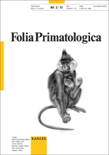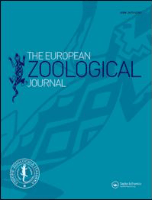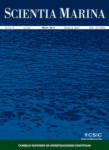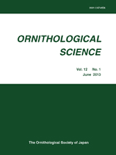
PRIMATES
Scope & Guideline
Connecting researchers and enthusiasts in the study of primates.
Introduction
Aims and Scopes
- Ecology and Behavior of Primates:
Research articles often explore the ecological dynamics of primate species, their social structures, and behavioral patterns, providing insights into their adaptation and survival strategies. - Conservation Biology:
The journal emphasizes conservation efforts and studies that assess the impact of human activities on primate populations, habitat suitability, and biodiversity, highlighting the importance of preserving primate species. - Comparative Studies:
The journal includes comparative analyses across different primate species, which enhance understanding of evolutionary relationships, behavioral ecology, and social interactions. - Methodological Innovations:
'PRIMATES' features studies that incorporate novel methodologies, such as genetic analyses, technological advancements (like UAVs), and advanced statistical techniques, to enhance the understanding of primate behavior and ecology. - Human-Primate Interactions:
Research addressing the impact of human activities on primates and their habitats, including urbanization, tourism, and conservation policies, is a significant focus area. - Cognitive and Social Behavior:
The journal publishes studies on the cognitive abilities and social behaviors of primates, contributing to the understanding of primate intelligence and social structure.
Trending and Emerging
- Technological Integration in Primate Research:
Studies utilizing advanced technologies such as UAVs, deep learning, and automated behavior recognition are on the rise, enhancing the efficiency and accuracy of data collection and analysis. - Conservation Genetics:
Research focusing on genetic diversity, population structure, and conservation genetics is gaining traction, highlighting the importance of genetic tools in understanding and preserving primate populations. - Impact of Climate Change:
There is an increasing focus on how climate change affects primate habitats and behaviors, as researchers seek to understand and mitigate the impacts of global environmental changes on primate species. - Social Network Analysis:
Emerging studies that analyze social networks within primate groups are becoming more prevalent, providing insights into social dynamics, cooperation, and competition among individuals. - Human-Wildlife Conflict and Management:
Research addressing the challenges of human-wildlife conflict, particularly in urban areas, is increasingly important as primates adapt to anthropogenic environments. - Health and Disease Ecology:
The exploration of health issues, including disease transmission between humans and primates, is becoming a critical area of study, particularly in the context of zoonotic diseases and conservation efforts.
Declining or Waning
- Traditional Behavioral Studies:
While behavioral studies remain important, there has been a noted decline in traditional observational studies without innovative methodological approaches, as researchers increasingly focus on integrating advanced technologies. - In-depth Anatomical Studies:
Research centered on detailed anatomical studies of primates has become less frequent, likely due to a shift towards more applied research focusing on conservation and behavioral ecology. - Single-Species Focus:
There has been a decline in studies focusing solely on a single primate species, with a trend towards more comparative and ecological studies that emphasize interspecies interactions and broader ecological contexts. - Historical Research:
Papers exploring historical or anecdotal accounts of primate research have decreased, as the journal prioritizes empirical studies with current relevance and implications for conservation. - Captive Primate Studies:
Research focusing exclusively on captive primates has waned, possibly as the field recognizes the importance of understanding primates in their natural habitats and the complexities of their interactions with the environment.
Similar Journals

ACTA OECOLOGICA-INTERNATIONAL JOURNAL OF ECOLOGY
Unveiling Insights into Ecological DynamicsACTA OECOLOGICA-INTERNATIONAL JOURNAL OF ECOLOGY, published by Elsevier, stands as a prominent platform for disseminating innovative research in the diverse field of ecology. Operating since 1983 and continuing to make significant contributions into 2024, this journal features critical studies that advance our understanding of ecological systems, behaviors, and conservation efforts. With an impressive Q2 ranking in both the ecology and nature conservation categories, it exemplifies high-quality scholarship, reflected in its Scopus rankings—#74 in Environmental Science and #254 in Agricultural and Biological Sciences. Researchers, professionals, and students in the field are invited to explore the latest findings and methodologies that address pivotal ecological issues. As a journal committed to fostering academic collaboration, ACTA OECOLOGICA is essential for anyone dedicated to enhancing their comprehension of ecological dynamics and advancing sustainability practices globally.

ZHURNAL OBSHCHEI BIOLOGII
Fostering Collaboration in Biological SciencesZHURNAL OBSHCHEI BIOLOGII, published by MEZHDUNARODNAYA KNIGA in the Russian Federation, is a venerable journal with a rich history originating in 1945. Renowned for its contributions to the fields of Ecology, Evolution, Behavior, and Systematics, as well as Medicine (miscellaneous), this journal provides a platform for researchers and professionals to disseminate significant findings within these domains. Although currently not classified as an open access publication, ZHURNAL OBSHCHEI BIOLOGII holds a Q4 quartile designation in its respective categories, reflecting its unique positioning within the global research landscape. While its coverage in Scopus is limited, the journal remains an important resource for academics interested in the evolution of biological sciences, especially within the context of Russian research traditions. By fostering scholarly communication and collaboration, ZHURNAL OBSHCHEI BIOLOGII continues to play a critical role in advancing knowledge in the biological sciences.

Journal of Fish and Wildlife Management
Navigating the future of fish and wildlife conservation.The Journal of Fish and Wildlife Management, published by the U.S. Fish & Wildlife Service, serves as a vital resource for scholars, researchers, and professionals in the fields of Animal Science, Ecology, and Conservation Biology. With its ISSN 1944-687X, this esteemed journal has been disseminating critical research findings since 2010, contributing significantly to the understanding of fish and wildlife conservation practices and their ecological impacts. Despite its Q3 category rankings in various disciplines as of 2023, it provides a platform for innovative research that influences policy and management strategies for biodiversity conservation. The journal, although not open access, remains committed to advancing the scientific discourse surrounding wildlife management with articles that emphasize practical conservation efforts and ecological sustainability. Readers can expect a diverse range of articles that promote best practices in the management and conservation of fish and wildlife resources, furthering our collective mission of preserving ecological health and biodiversity for future generations.

FOLIA PRIMATOLOGICA
Fostering Understanding of Primates in a Global ContextFOLIA PRIMATOLOGICA is a prestigious academic journal published by BRILL, focusing on the interdisciplinary fields of animal science and zoology, as well as ecology and evolutionary biology. With an ISSN of 0015-5713 and E-ISSN 1421-9980, the journal has been a significant contributor to the understanding of primatology since its inception in 1963 and continues to disseminate impactful research through 2024. The journal is recognized in the Q2 quartile for Animal Science and Zoology and Q3 for Ecology, Evolution, Behavior, and Systematics, showcasing a solid reputation within the academic community. Both Scopus rankings and percentiles indicate its influence, with a rank of 137/490 in Animal Science and 277/721 in Ecology and Evolution, reflecting its relevance and commitment to promoting high-quality research. Though it does not operate on an open-access model, FOLIA PRIMATOLOGICA remains a vital resource for researchers, professionals, and students alike, striving to advance the understanding of primates and their ecological contexts within a global framework.

CHELONIAN CONSERVATION AND BIOLOGY
Advancing chelonian conservation for a sustainable future.Chelonian Conservation and Biology is a distinguished academic journal dedicated to advancing the field of chelonian research, encompassing conservation, ecology, and biology of turtles and tortoises. Published by Allen Press Inc in the United States, this journal is well-regarded within the realm of Animal Science and Zoology, as well as Ecology, Evolution, Behavior and Systematics, holding a commendable Q3 ranking in both categories for 2023. With an ISSN of 1071-8443 and an E-ISSN of 1943-3956, the journal features a diverse range of articles aimed at professionals, researchers, and students, fostering an understanding of the critical challenges facing chelonians worldwide. Although not an open-access publication, Chelonian Conservation and Biology provides high-quality content, including original research, reviews, and case studies, encouraging engagement and collaboration among experts. With coverage extending from 2006 to 2024, the journal serves as a vital platform for disseminating knowledge and promoting conservation efforts essential to the survival of these remarkable species.

European Zoological Journal
Connecting Research and Conservation for a Sustainable FutureEuropean Zoological Journal, published by Taylor & Francis Ltd, is an esteemed open-access publication dedicated to advancing the exciting field of zoology. Since its inception in 2017, this journal has progressively established itself as a vital resource for researchers, professionals, and students alike. With its Q2 ranking in Animal Science and Zoology as of 2023, the journal ranks in the 69th percentile among its peers, showcasing its influence and contribution to the discipline. The journal’s broad scope covers a wide range of topics within zoology, aiming to foster an understanding of animal biology and conservation efforts. As an open-access journal, it not only enhances the dissemination of knowledge but also encourages collaborative research across global communities. Situated in the United Kingdom, the European Zoological Journal invites submissions that contribute to the evolving discourse in animal sciences, and endeavors to support the scientific community in addressing pressing ecological challenges.

SCIENTIA MARINA
Connecting Scholars to the Wonders of the SeaSCIENTIA MARINA, an esteemed journal published by the Consejo Superior Investigaciones Cientificas (CSIC) in Spain, focuses on critical studies within the fields of Aquatic Science and Oceanography. With an Open Access policy since its inception in 1998, this journal facilitates widespread dissemination of research findings, significantly enhancing accessibility for researchers, professionals, and students alike. Currently, SCIENTIA MARINA holds a Q3 ranking in both categories for 2023, demonstrating its commitment to advancing knowledge in marine and aquatic environments. With a convergence of research years from 1996 to 2024, it remains a pivotal platform for innovative research, encompassing various aspects of marine biology, ecology, and environmental science. The journal serves as an essential resource for scholars aiming to contribute to the understanding and preservation of marine ecosystems.

INTERNATIONAL JOURNAL OF PRIMATOLOGY
Advancing Knowledge in Primate Behavior and EcologyINTERNATIONAL JOURNAL OF PRIMATOLOGY, published by Springer, stands as a pivotal publication in the fields of Animal Science and Zoology, as well as Ecology, Evolution, Behavior, and Systematics. With an impressive impact factor that places it in the Q1 category for both disciplines, this journal facilitates the dissemination of high-quality, peer-reviewed research that spans a diverse array of topics related to primate biology and conservation. Established in 1980 and continuing through 2024, it provides a vital platform for researchers, professionals, and students alike to explore the complexities of primate behavior, ecology, and evolution. While currently not offering open access, the journal is highly respected within the academic community, reflected in its Scopus Rankings that highlight its sustained influence and contribution to the field. The journal's commitment to advancing knowledge and understanding of primate species makes it an essential resource for anyone dedicated to this important area of study.

ORNITHOLOGICAL SCIENCE
Empowering scholars to protect global avian biodiversity.ORNITHOLOGICAL SCIENCE, published by the Ornithological Society of Japan in collaboration with the University of Tokyo, stands as a pivotal platform for advancing knowledge in the field of ornithology. With a keen focus on avian biology and conservation, this esteemed journal is dedicated to publishing high-quality research, reviews, and technical notes that explore the intricacies of bird science. Although currently categorized within the Q4 quartile in Animal Science and Zoology, the journal aims to elevate its standings by fostering scholarly communication and impactful scientific discourse. This journal has been consistently publishing since its inception in 2002, with a brief hiatus before resuming its invaluable contributions to the scientific community in 2009. Despite the absence of specific open access options, the journal remains a crucial resource for researchers, professionals, and students seeking to expand their understanding of avian ecology and behavior. Through its comprehensive scope, ORNITHOLOGICAL SCIENCE reflects the increasing importance of ornithological studies in addressing global biodiversity issues and conservation challenges.

Neotropical Biology and Conservation
Innovating Conservation Strategies for Future GenerationsNeotropical Biology and Conservation, published by Pensoft Publishers, serves as a pivotal platform for researchers and professionals dedicated to the understanding and preservation of biodiversity in the Neotropical region. This Open Access journal, operational since 2006 and based in Brazil, invites contributions that delve into the complexities of ecology, evolution, and conservation strategies pertinent to the diverse ecosystems of South and Central America. With a commendable 2023 impact factor reflected in its Q3 rankings across multiple categories including Animal Science, Ecology, and Plant Science, it stands as a valuable resource for academics seeking to publish innovative findings and foster dialogue in these critical areas of study. The journal's commitment to open access ensures that knowledge is readily available to anyone interested in advancing the field of neotropical biology and conservation. Join the global conversation and contribute to the vital work of preserving our planet’s rich biological heritage through rigorous research published in this esteemed journal.